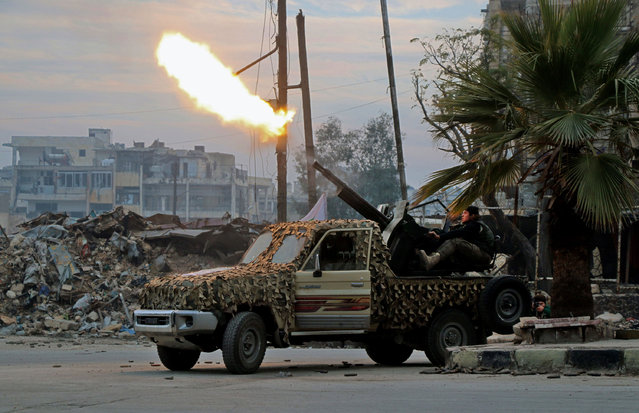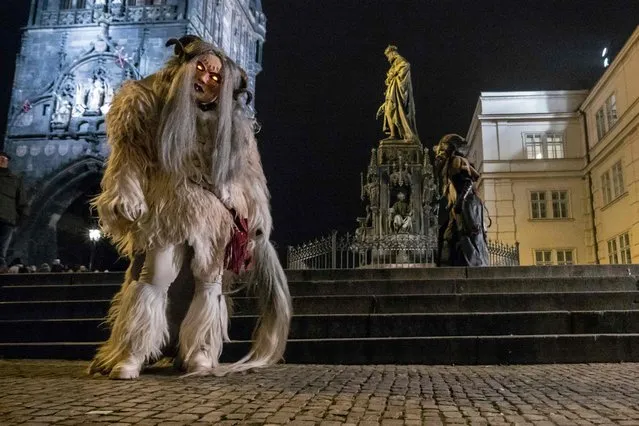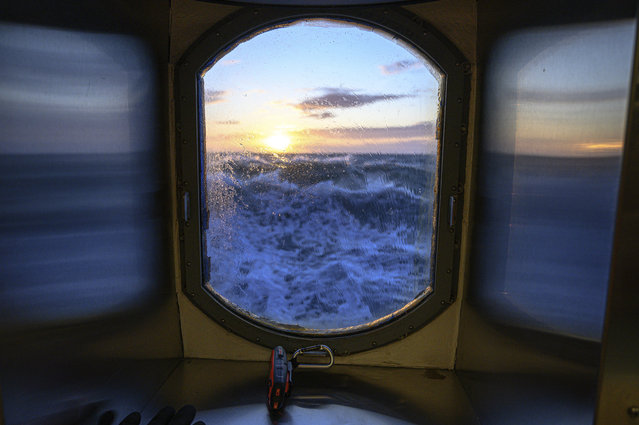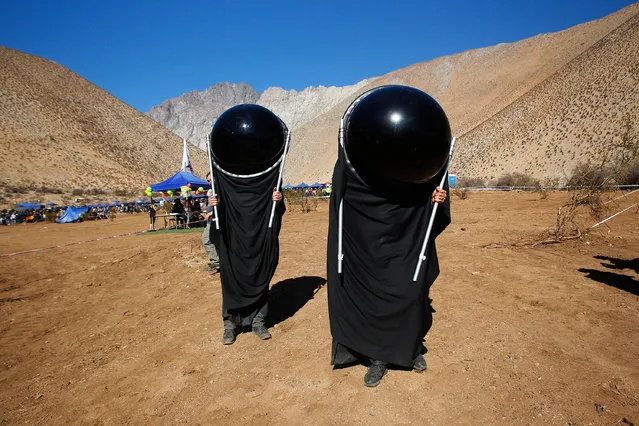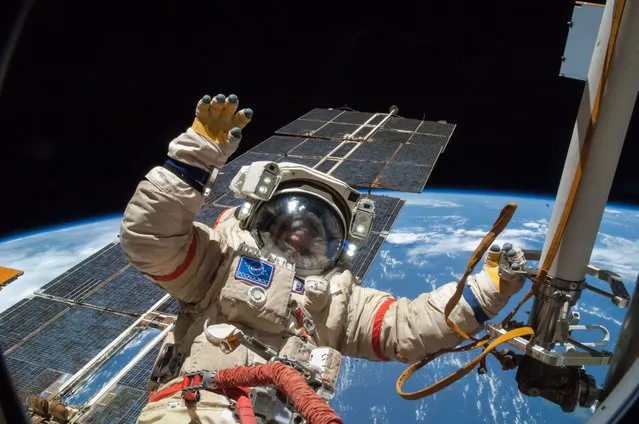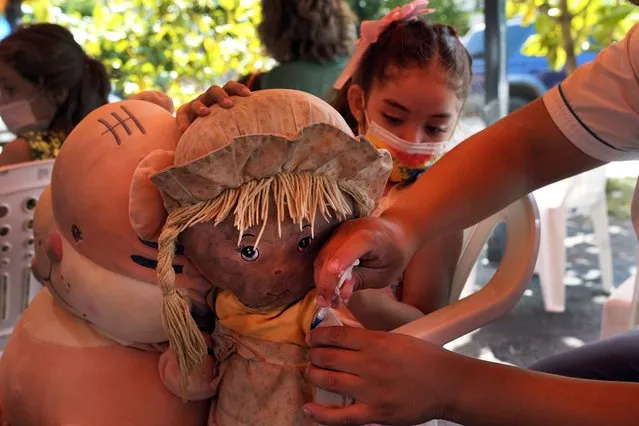
A health worker pretends to give a shot to a girl's doll to help put her at ease before giving her a shot of the Coronavac vaccine for COVID-19, at a sports center as children age 5 – 11 start getting vaccinated in Asuncion, Paraguay, Monday, January 31, 2022. (Photo by Jorge Saenz/AP Photo)
01 Feb 2022 07:42:00,post received
0 comments



